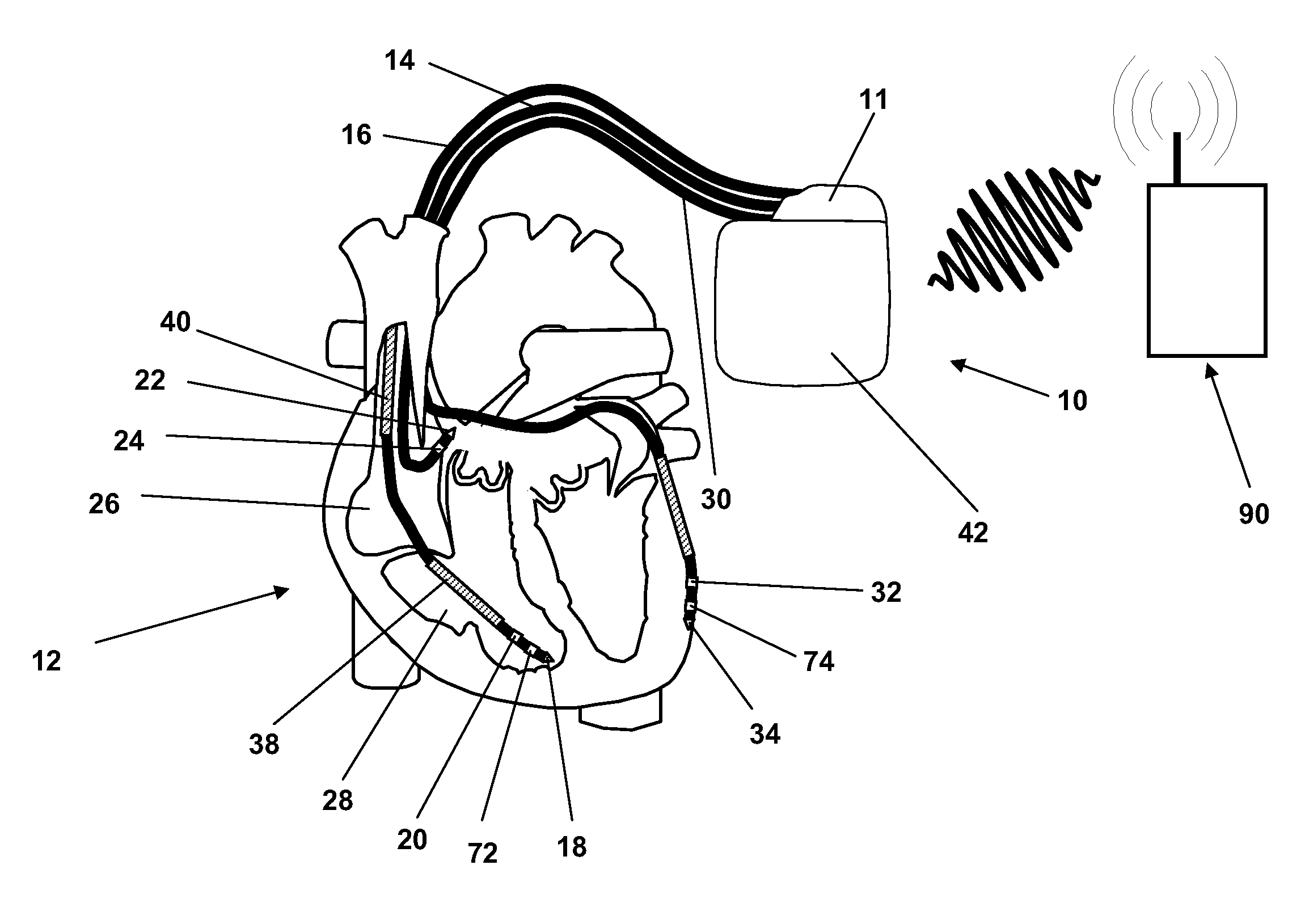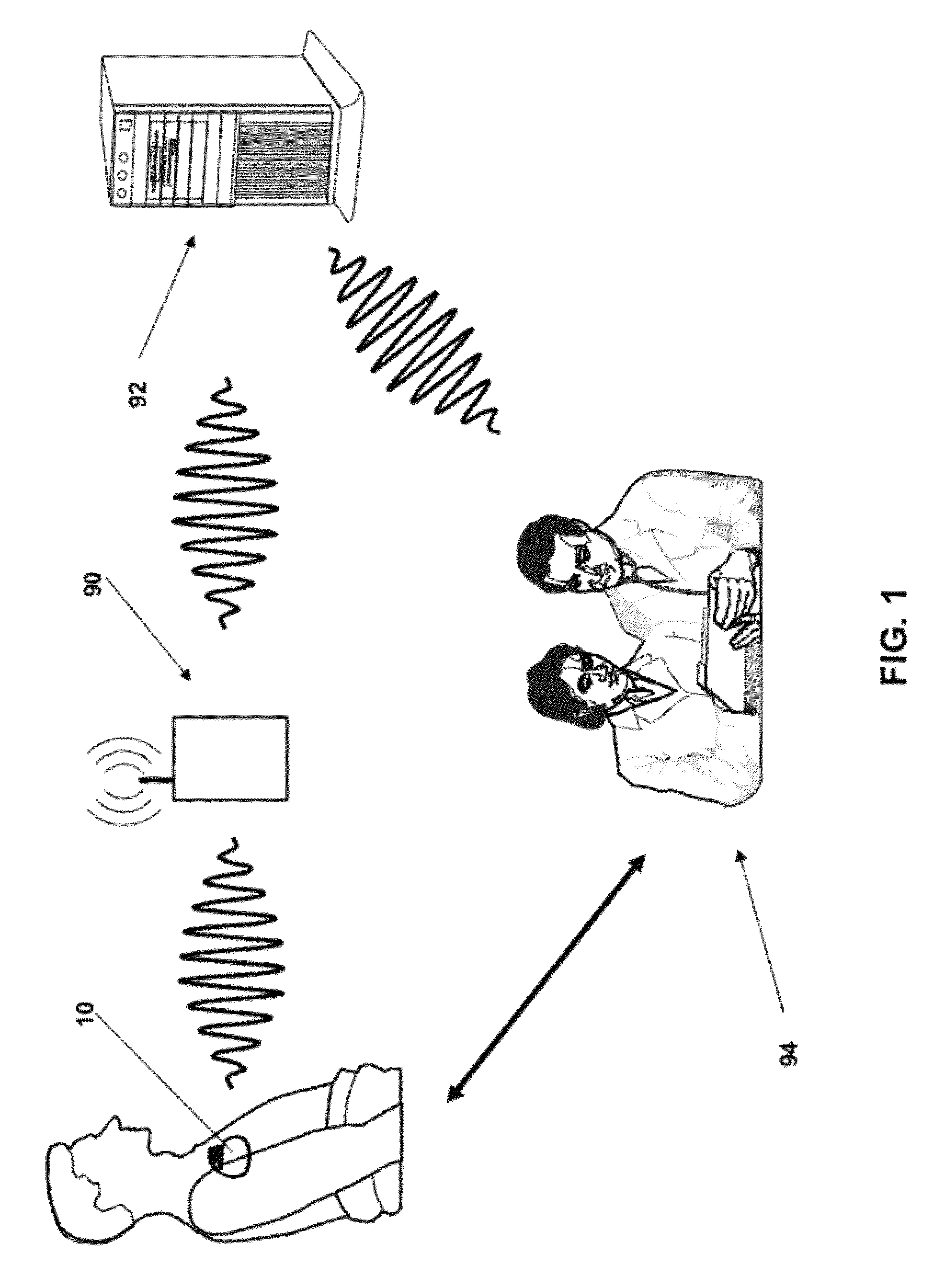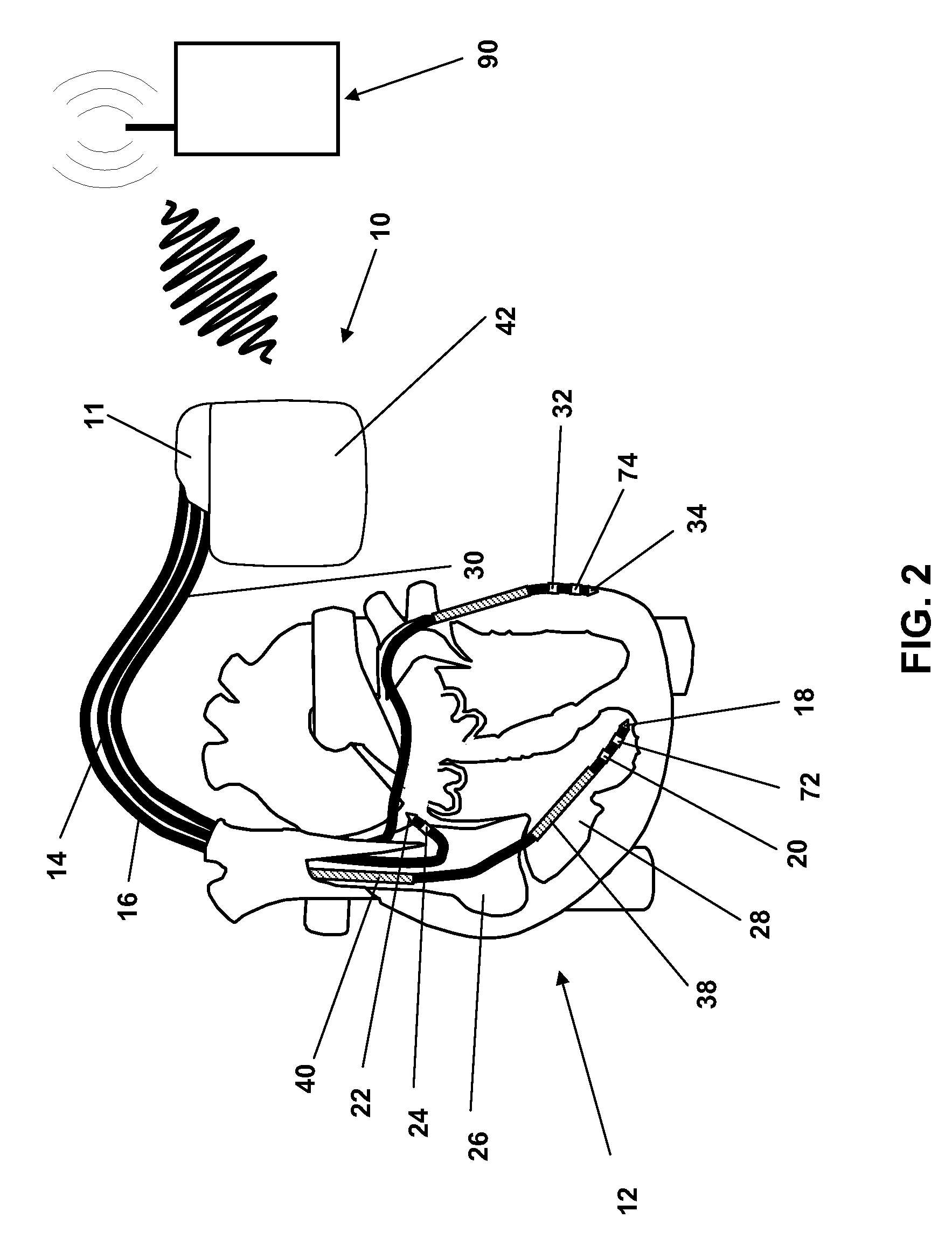Intracardial electrode line and cardiac stimulator
a technology of electrodes and electrodes, applied in the field of intracardial electrode lines and cardiac stimulators, can solve the problems of additional sensors implanted in the heart, disadvantages of replicability, and methods of pressure measuremen
- Summary
- Abstract
- Description
- Claims
- Application Information
AI Technical Summary
Benefits of technology
Problems solved by technology
Method used
Image
Examples
Embodiment Construction
[0037]A cardiac therapy system is shown for overview in FIG. 1, which comprises, in addition to an implanted cardiac pacemaker 10, an external device (patient device) 90 and service center 92, symbolically shown by a server. The implantable cardiac stimulator 10 has a telemetry unit, for which it may exchange data wirelessly with the external device 90. The external device 90 is, for example, connected wire-bound to the service center 92, so that overall data may be exchanged between the service center 92 and the implantable cardiac stimulator 10 via the external device 90 as the relay station. A physician team 94 may search the data which the service center 92 has received from the implantable cardiac stimulator 10 via a data-technology access to the service center 92.
[0038]FIG. 2 shows the implantable cardiac stimulator 10 in the form of a three-chamber cardiac pacemaker / cardioverter / defibrillator having electrode lines 14, 16, and 30 connected thereto, in connection with a heart ...
PUM
 Login to View More
Login to View More Abstract
Description
Claims
Application Information
 Login to View More
Login to View More - R&D
- Intellectual Property
- Life Sciences
- Materials
- Tech Scout
- Unparalleled Data Quality
- Higher Quality Content
- 60% Fewer Hallucinations
Browse by: Latest US Patents, China's latest patents, Technical Efficacy Thesaurus, Application Domain, Technology Topic, Popular Technical Reports.
© 2025 PatSnap. All rights reserved.Legal|Privacy policy|Modern Slavery Act Transparency Statement|Sitemap|About US| Contact US: help@patsnap.com



